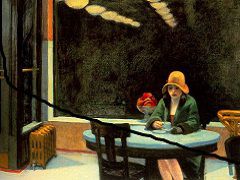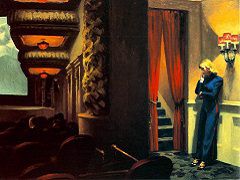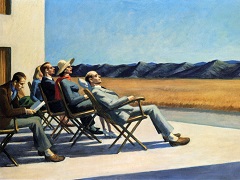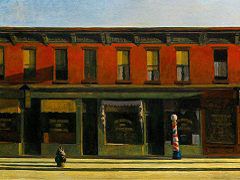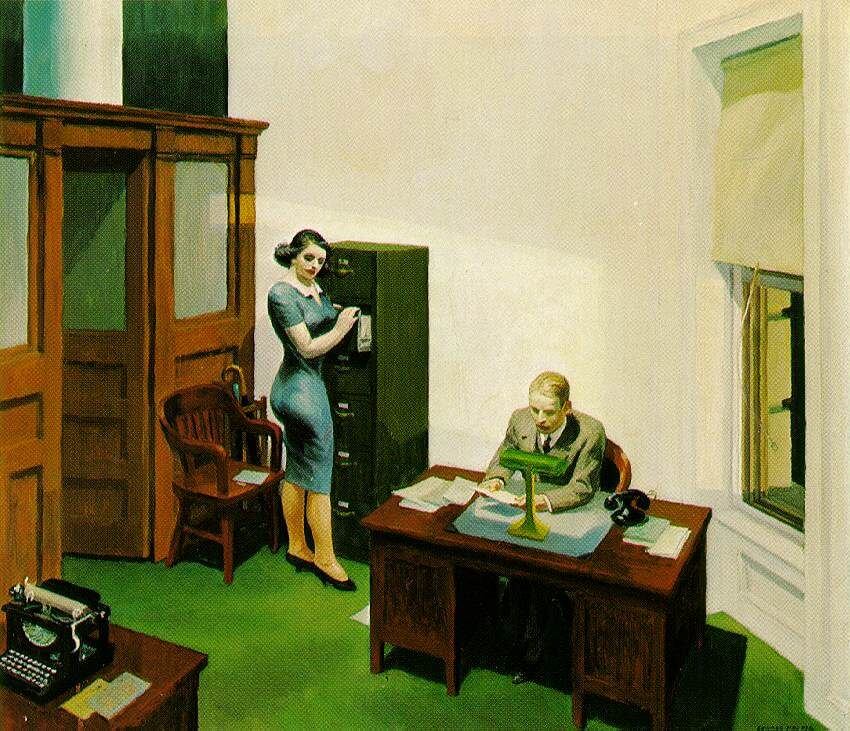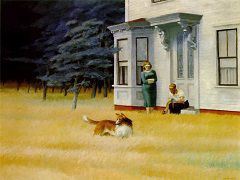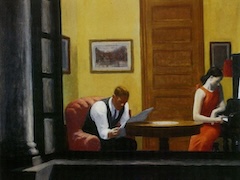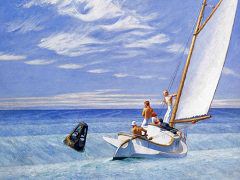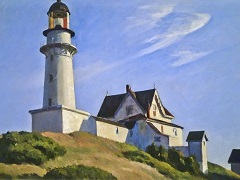Evening Wind, 1921 by Edward Hopper
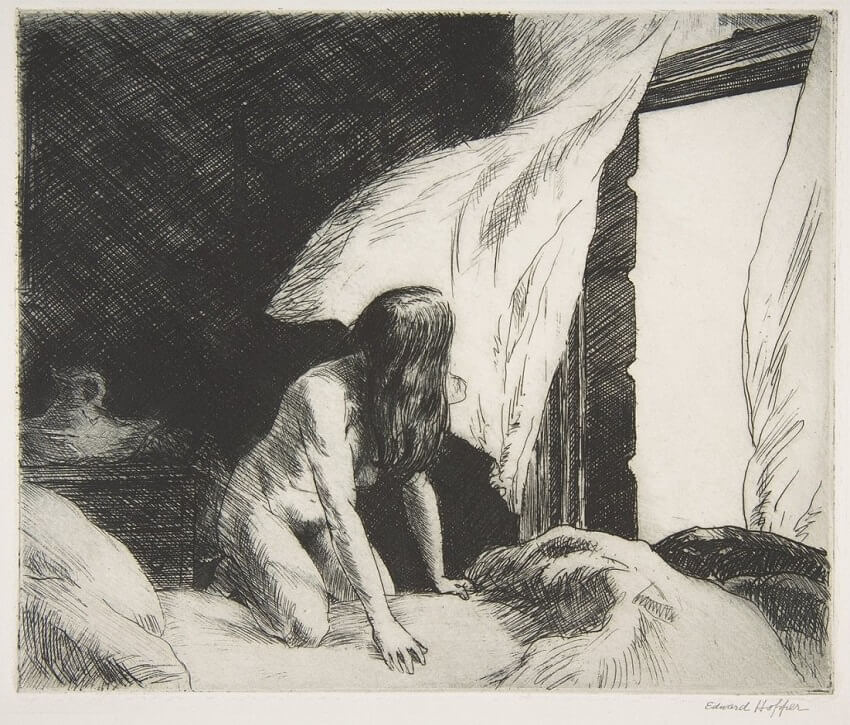
Of all Hopper's etchings, Evening Wind most clearly manifests his ability to find convincing modern-day equivalents for traditional subject matter. In this print he submerges traditional subject matter in an aura of mystery. Evening Wind can be regarded as a modern-day Annunciation. Although the figure in Hopper's print might be getting out of bed to close the window, her orientation suggests that she might also be climbing into an unmade bed, and her nudity indicates her vulnerability and possible receptivity to the wind, which could be viewed as a symbol of the spirit or the Holy Ghost, which is sometimes represented by a dove, an emblem of the unborn soul. To appreciate this scene one does not have to read it in relation to earlier art, and it is possible that Hopper did not consciously think of his etching as an Annunciation even though his subject does represent a secularization of it or a modern-day version of its pagan counterpart, the story of the seduction of Danae by Zeus who appears as a shower of gold. This Greco-Roman myth was also the subject of important Rembrandt' paintings and works of Titian, and Rembrandt is an artist Hopper held in high esteem. Knowing the art historical references for depictions of females consorting with divine entities adds to the meaning of Evening Wind, and Hopper may have inverted tradition to a completely new end, for he has characterized the implied viewer of this etching as someone who is in the room with the girl.


